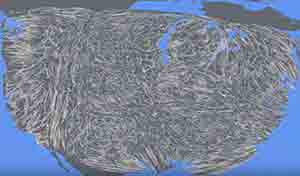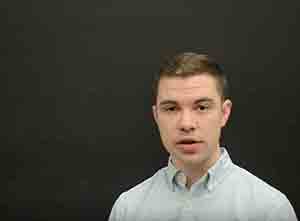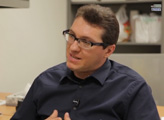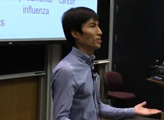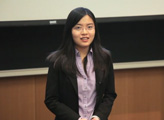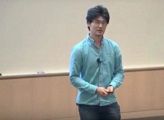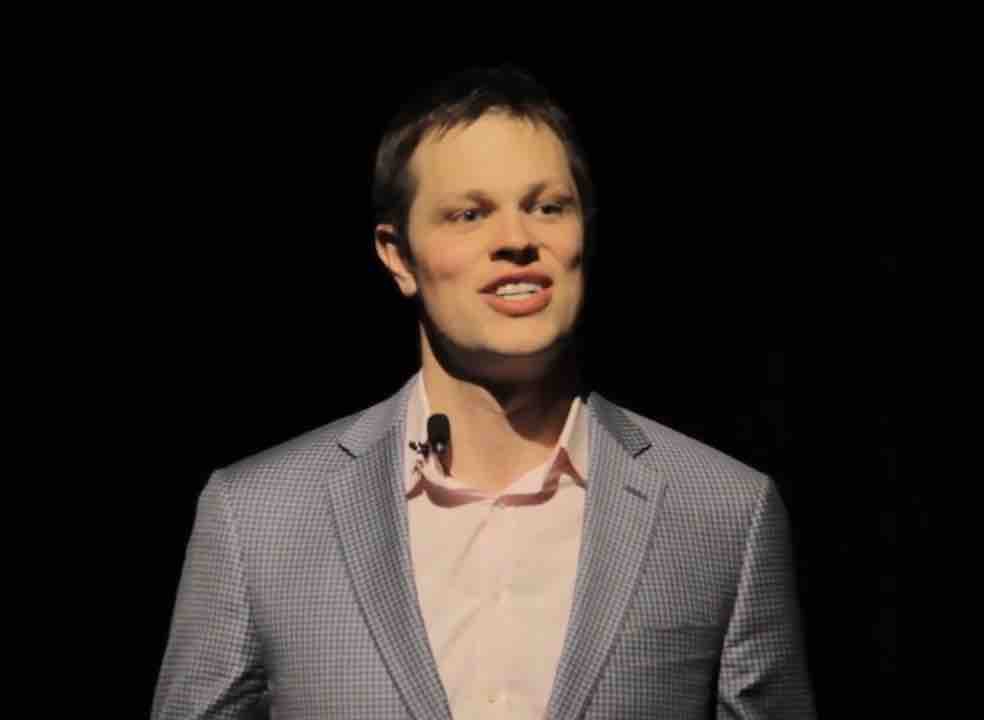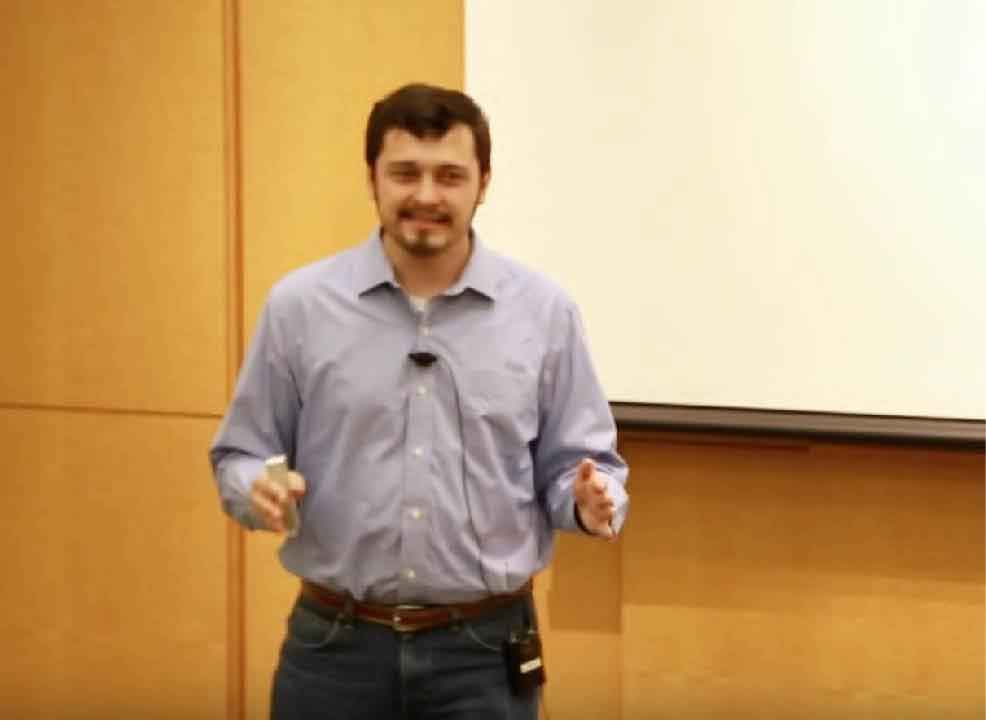Transfer Learning for New Disease Treatment
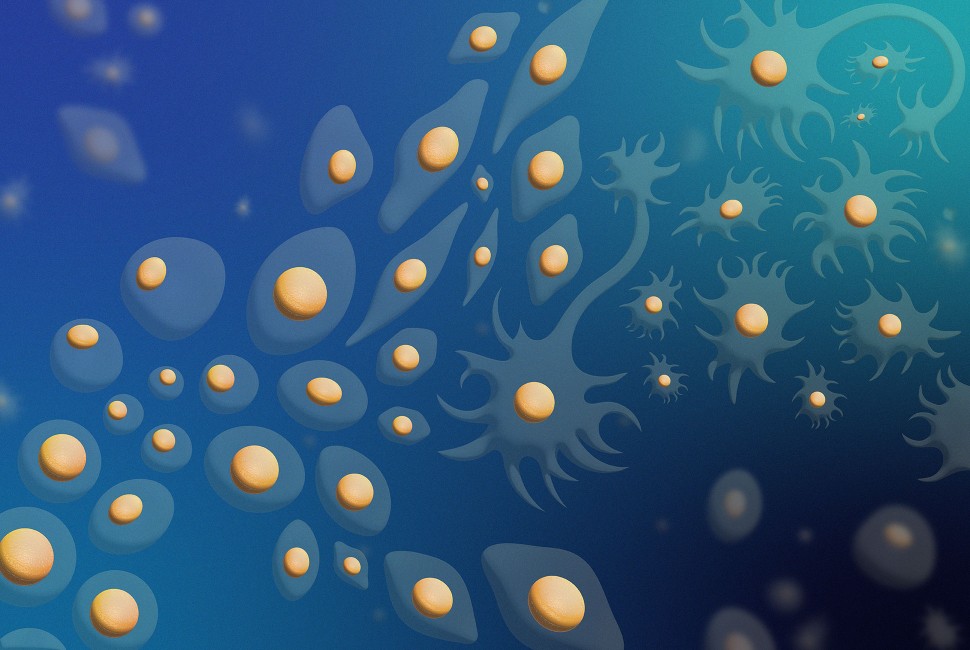 Understanding how to guide cells from diseased to healthy states is a longstanding challenge in biomedicine. In a recent PNAS publication, we developed an approach that uses transfer learning to predict how genes can be perturbed to reprogram cells and promote prespecified healthy behavior. We estimated the perturbation responses from large-scale gene expression datasets and found additive response combinations that achieve the desired behavior, allowing knowledge from one setting to inform another. The approach has broad potential for therapeutic development, offering a scalable data-driven pathway to design interventions for a variety of diseases. You can read more about this work here.
Understanding how to guide cells from diseased to healthy states is a longstanding challenge in biomedicine. In a recent PNAS publication, we developed an approach that uses transfer learning to predict how genes can be perturbed to reprogram cells and promote prespecified healthy behavior. We estimated the perturbation responses from large-scale gene expression datasets and found additive response combinations that achieve the desired behavior, allowing knowledge from one setting to inform another. The approach has broad potential for therapeutic development, offering a scalable data-driven pathway to design interventions for a variety of diseases. You can read more about this work here.
Creating Programmable Microfluidic Networks
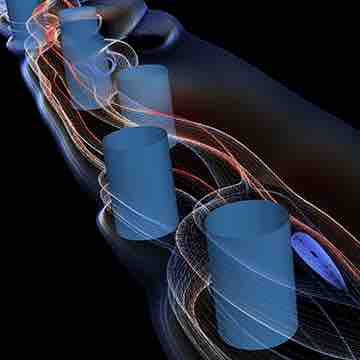 Microfluidic systems are now being designed with precision as miniaturized fluid manipulation devices that can execute increasingly complex tasks. However, their operation often requires numerous external control devices. In our recent Nature article, we design microfluidic networks whose behavior can be harnessed to create a fluid analogue of Braess’s paradox and switch the direction of internal flows solely by manipulating the input and/or output pressures. These findings can be used to create built-in control mechanisms, thereby facilitating the development of portable systems and enabling novel applications, ranging from wearable healthcare technologies to deployable space systems.
Microfluidic systems are now being designed with precision as miniaturized fluid manipulation devices that can execute increasingly complex tasks. However, their operation often requires numerous external control devices. In our recent Nature article, we design microfluidic networks whose behavior can be harnessed to create a fluid analogue of Braess’s paradox and switch the direction of internal flows solely by manipulating the input and/or output pressures. These findings can be used to create built-in control mechanisms, thereby facilitating the development of portable systems and enabling novel applications, ranging from wearable healthcare technologies to deployable space systems.
Demonstrating Converse Symmetry Breaking
 Symmetry breaking—the phenomenon in which the symmetry of a system is not inherited by its stable states—underlies pattern formation, superconductivity, and numerous other effects. Theoretical work has established the possibility of converse symmetry breaking, a phenomenon in which the stable states are symmetric only when the system itself is not. This includes scenarios in which interacting entities are required to be non-identical in order to exhibit identical behavior, such as in reaching consensus. In our recent Nature Physics article, we present an experimental demonstration of this phenomenon using a network of electromechanical oscillators. An animated summary of the work is available here and you can view our cover on the issue here.
Symmetry breaking—the phenomenon in which the symmetry of a system is not inherited by its stable states—underlies pattern formation, superconductivity, and numerous other effects. Theoretical work has established the possibility of converse symmetry breaking, a phenomenon in which the stable states are symmetric only when the system itself is not. This includes scenarios in which interacting entities are required to be non-identical in order to exhibit identical behavior, such as in reaching consensus. In our recent Nature Physics article, we present an experimental demonstration of this phenomenon using a network of electromechanical oscillators. An animated summary of the work is available here and you can view our cover on the issue here.
Videos
Recent Publications
B. Kuznets-Speck, B.K. Ogonor, T.P. Wytock, and A.E. Motter,
Generative prediction of causal gene sets responsible for complex traits,
Proc. Natl. Acad. Sci. USA 122(24), e2415071122 (2025).
doi:10.1073/pnas.2415071122
J.L. Ocampo-Espindola, C. Bick, A.E. Motter, and I.Z. Kiss,
Frequency Synchronization Induced by Frequency Detuning,
Science Advances 11, eadu4114 (2025).
doi:10.1126/sciadv.adu4114
arXiv:2505.04714
Y. Wang, A.N. Montanari, and A.E. Motter,
Distributed Lyapunov Functions for Nonlinear Networks,
IEEE Control Systems Letters 9, 486 (2025).
doi:10.1109/LCSYS.2025.3573881
arXiv:2506.20728
A. Allibhoy, A.N. Montanari, F. Pasqualetti, and A.E. Motter,
Global Optimization Through Heterogeneous Oscillator Ising Machines,
arXiv:2505.17027
A.N. Montanari, A.E.D. Barioni, C. Duan, and A.E. Motter,
Optimal flock formation induced by agent heterogeneity,
arXiv:2504.12297v1
Y. Shao, J.-R. Angilella, and A.E. Motter,
Emergent oscillations and chaos in non-compliant microfluidic networks,
Phys. Rev. Fluids 10, 054401 (2025).
doi:10.1103/PhysRevFluids.10.054401
arXiv:2505.00068
A.N. Montanari, C. Duan, and A.E. Motter,
Duality between controllability and observability for target control and estimation in networks,
IEEE Transactions on Automatic Control (2025).
doi:10.1109/TAC.2025.3552001
arXiv:2401.16372
A.N. Montanari, C. Duan, and A.E. Motter,
On the Popov-Belevitch-Hautus tests for functional observability and output controllability,
Automatica 174, 112122 (2025).
doi:10.1016/j.automatica.2025.112122
arXiv:2402.03245
A. Haber, F. Molnar, and A.E. Motter,
Global network control from local information,
Chaos 34, 123166 (2024).
doi:10.1063/5.0239177
arXiv:2501.03331
Z.G. Nicolaou, F. Jiang, and A.E. Motter,
Metamaterials with negative compressibility highlight evolving interpretations and opportunities,
Nature Communications 15, 8573 (2024).
doi:10.1038/s41467-024-52853-x
arXiv:2410.07489
Y. Zhao, T.P. Wytock, K.A. Reynolds, and A.E. Motter,
Irreversibility in bacterial regulatory networks,
Science Advances 10(35), eado3232 (2024).
doi:10.1126/sciadv.ado3232
arXiv:2409.04513v1 [
T.P. Wytock, and A.E. Motter,
Cell reprogramming design by transfer learning of functional transcriptional networks,
Proc. Natl. Acad. Sci. USA 121(11), e2312942121 (2024).
doi:10.1073/pnas.2312942121
arXiv:2403.04837v1
Adilson E. Motter

Photo by Eileen Molony
Professor Motter's research is focused on the dynamical behavior and control of complex systems and networks. Current projects include quantum networks, machine learning applications to network problems, and data-driven discovery in network science. More...
Twitter - Google Scholar - ORCID
YouTube Channel
Postdoctoral Positions
The Motter group is currently recruiting postdoctoral researchers in mechanical metamaterial networks, quantum network science, and other areas of complex systems and networks.
“Janus Bunch” Complexity Explorable
Explore the wealth of dynamical states exhibited in a network of Janus oscillators.
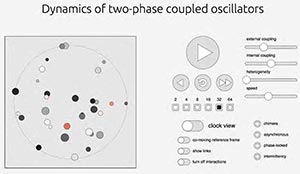
Group News
June 2025: Nicole Hampton recognized among 2024-25 Physics and Astronomy Scholars.
May 2025: Nicole Hampton, Anna Tkebuchava, and Jimmy Zhang awarded summer research grants.
June 2024: Ana E. D. Barioni and Arthur N. Montanari receive Honorable Mention in NetSci 2024 Educational Video Competition.
May 2024: The Center for Network Dynamics hosts the “Brain Architecture and Computing 2024” workshop.
May 2024: Jorin T. Graham presents the public lecture “Do Cicadas Have a Choirmaster?”.
January–February 2024: Arthur Montanari delivers the 2024 Sievert Prize Lecture Series, titled “Networks: From Brains and Quantum Internet to Climate Change”.
September 2023: Northwestern launches the Center for Network Dynamics, directed by Prof. Adilson Motter.
June 2023: Ann (Yian) Xu recognized as Outstanding Lab Teaching Assistant.
October 2022: Adilson E. Motter receives the Senior Scientific Award from the Complex Systems Society.
September 2022: Adilson E. Motter and Renaud Lambiotte chair the 2022 SIAM Workshop on Network Science.
Selected Press
AI identifies key gene sets that cause complex disease
Northwestern Now (June 9, 2025)
http://...
Bacterial cells transmit memories to offspring
Northwestern Now (August 28, 2024)
http://...
From a Point to a Torus: Unveiling Emergent Dynamics with Higher-order Bifurcations
SIAM News (July 5, 2024)
http://...
Transfer learning paves the way for new disease treatments
Northwestern Now (March 4, 2024)
http://...
Failures in large networks can be prevented with local focus
Northwestern Now (August 8, 2022)
http://...

